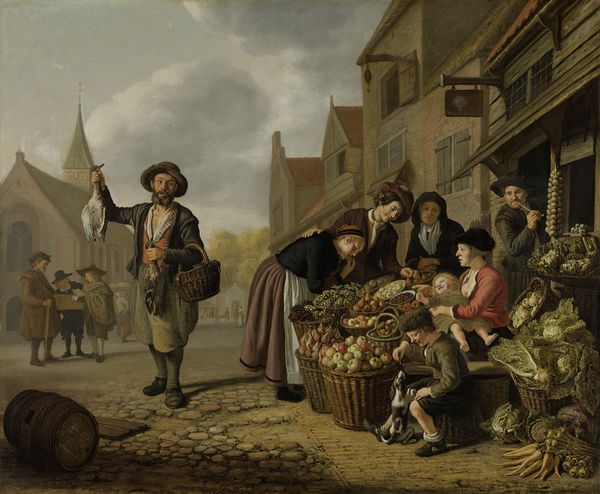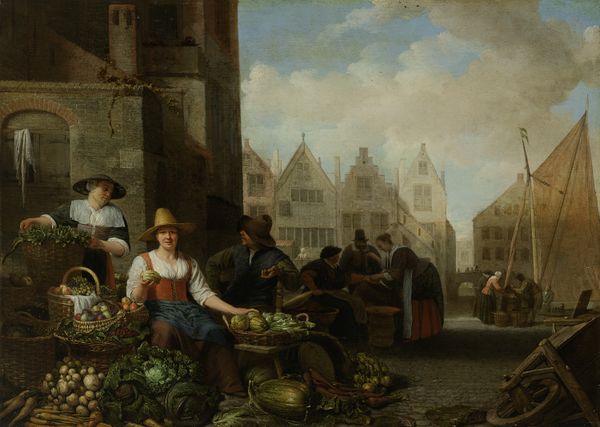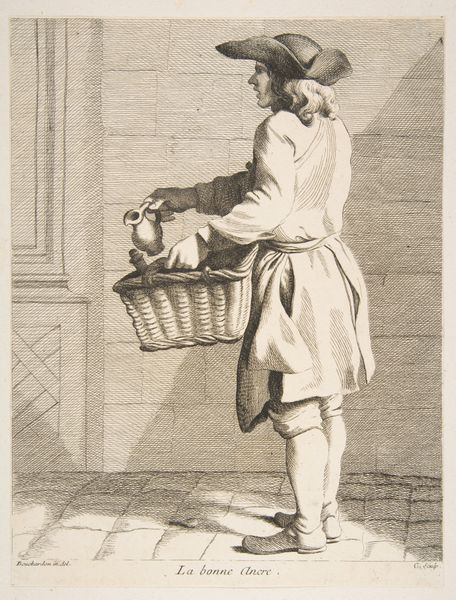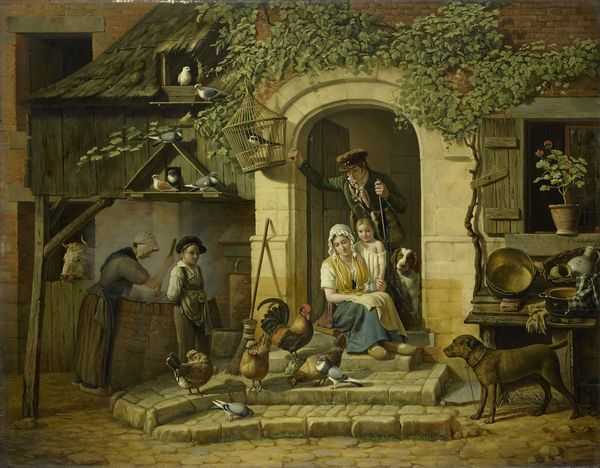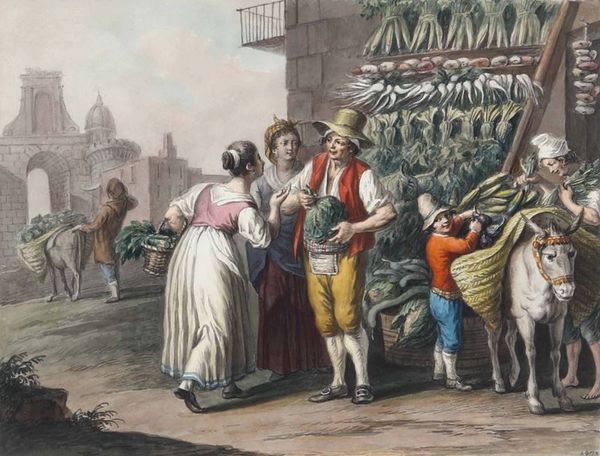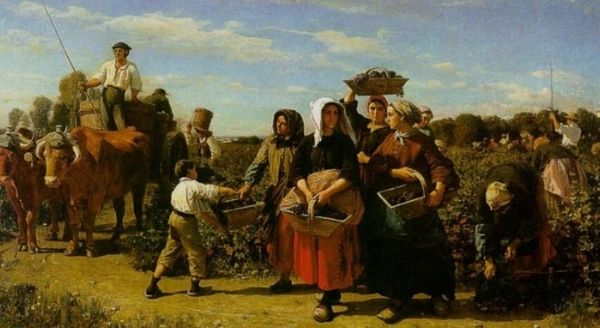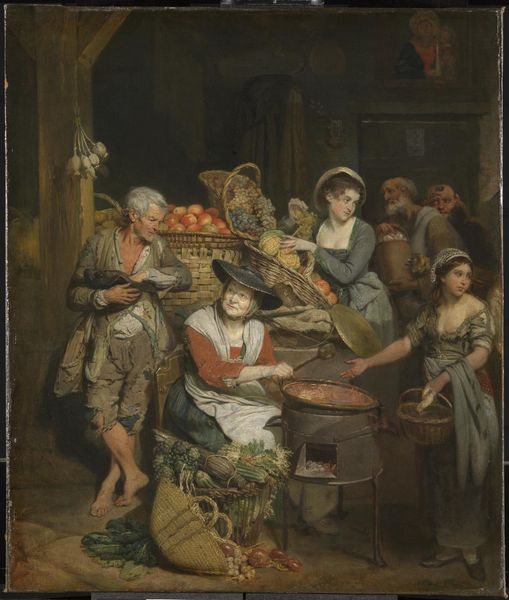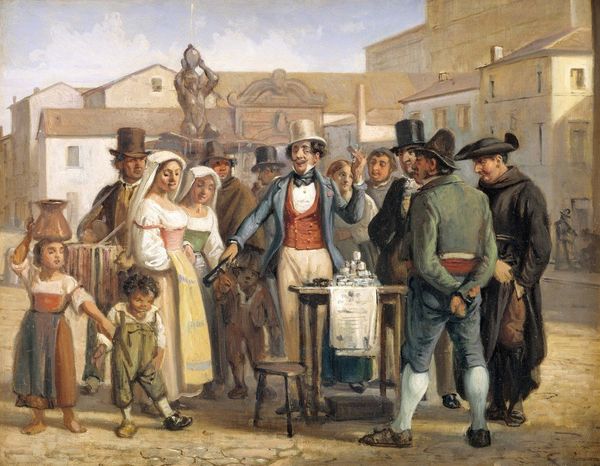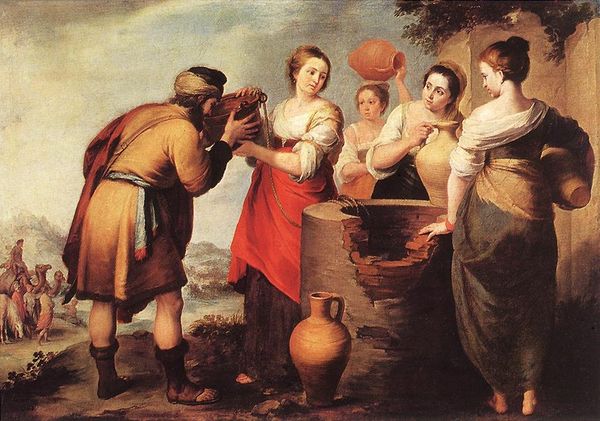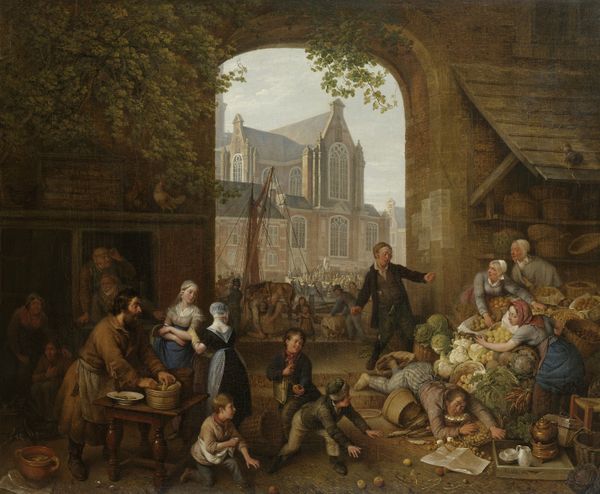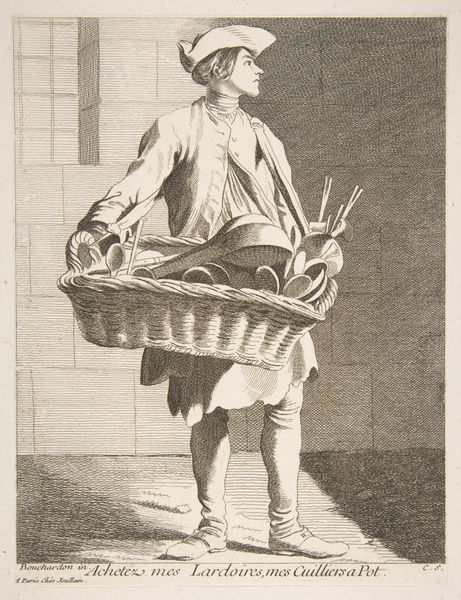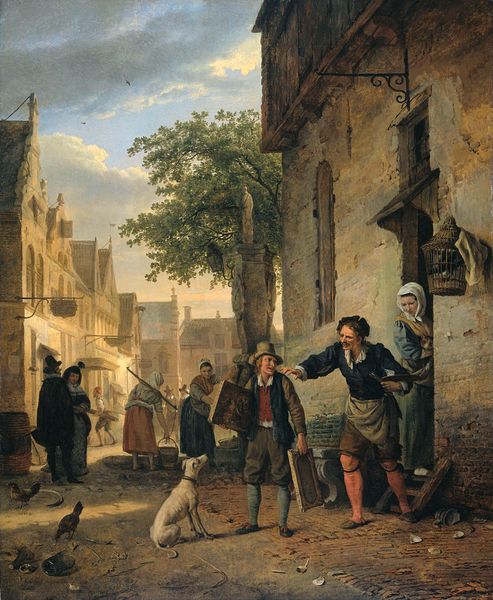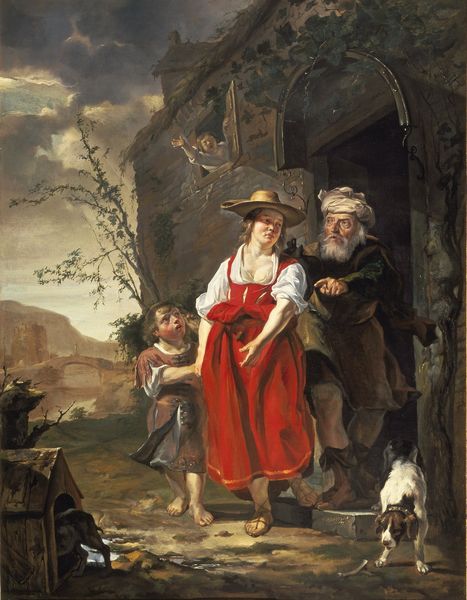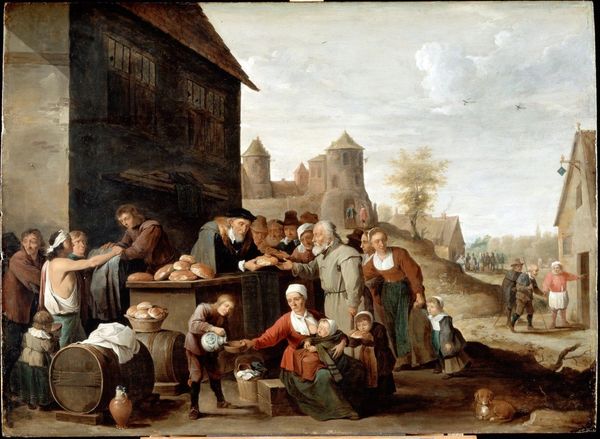
Copyright: Public domain
Editor: This is "Venetian Fruit Seller" by Ferdinand Georg Waldmüller, painted in 1826. It's rendered in oil on canvas, and the figures seem so alive! How fascinating to witness such artistry that almost feels like a photograph. I am particularly curious to know – what specific elements stand out to you? Curator: Immediately, the emphasis on texture arrests the eye. Note the sharp distinction between the rough weave of the baskets and the smoother treatment of the seller’s vest. Waldmüller meticulously contrasts tactile elements, creating visual interest. Consider also how the play of light directs our focus. Editor: Can you expand on that idea? I do notice a strong contrast between the light falling on the seller versus the shadows around him and the other figures on the street. Curator: Yes. The carefully modulated light accentuates certain forms, almost isolating the fruit seller and conferring on him a degree of significance. Semiotically, the composition uses light to prioritize information within the scene, offering a hierarchical visual structure. Further, consider the use of the underpainting and how that helps modulate the colours. Editor: The way you describe it gives me an entirely new appreciation for Waldmüller’s intentions and what might have been the goals of this era! Curator: Indeed, Waldmüller showcases not merely representational skill, but a keen engagement with the underlying structures of visual language. This structural engagement reveals how a seemingly straightforward genre scene encodes complex dynamics of light, texture, and form to guide the viewer’s perception. Editor: Thank you! Thinking about those formal aspects makes me appreciate the work so much more.
Comments
No comments
Be the first to comment and join the conversation on the ultimate creative platform.
